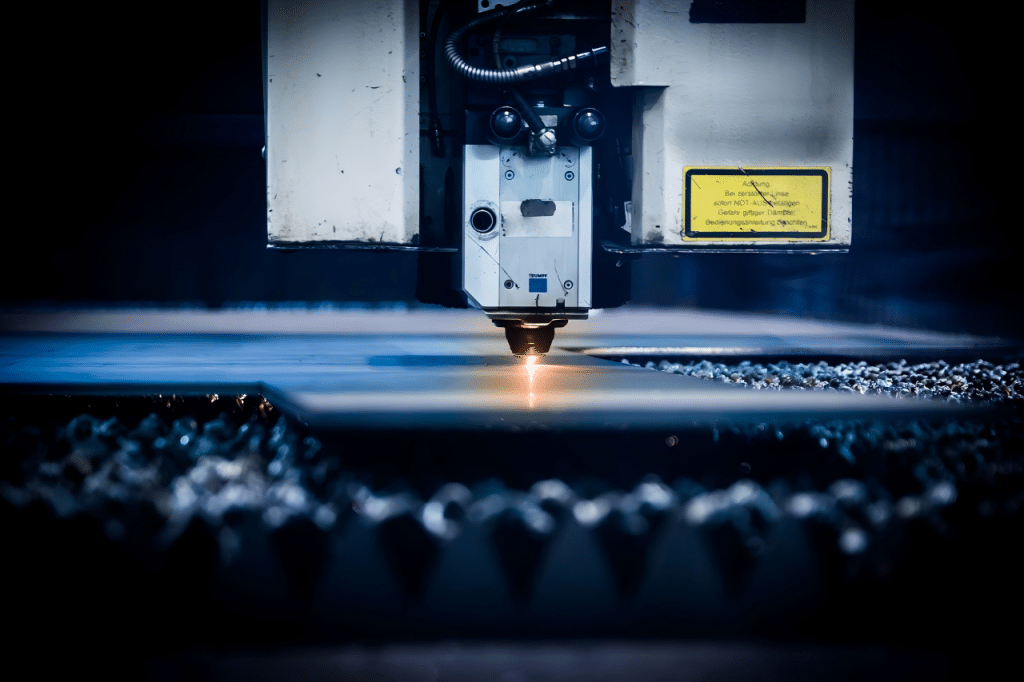Laser welding might sound like something out of a sci-fi flick, but it’s one of modern electronics' unsung heroes. This high-precision technology, among others, initiated by Denaliweld, quietly transforms how we build the miniature tech that powers our daily lives, from smartphones to surgical implants.

Laser welding has become a go-to tool in electronics and microfabrication. It’s fast, incredibly precise, and works well on a tiny scale, making it perfect for the fiddly bits inside the gadgets we rely on.
Of course, all this capability comes at a price. The laser welder price can swing wildly depending on what you need. Entry-level models might run a few thousand bucks, while industrial-grade systems with all the bells and whistles can soar past the $100,000 mark. Still, understanding where and how these machines are used helps clarify why they’re worth the investment.
Laser welding isn’t just a fancy way to melt things together—it’s a highly specialized technique built for accuracy and versatility, especially when working with tiny, intricate components.
Laser welding uses a concentrated light beam to fuse materials at their core. The beam is so intense that it heats components rapidly, forming a solid bond while keeping the surrounding areas cool. That’s a huge plus in electronics, where even excess heat can fry delicate circuits.
Not all laser welding is created equal. Depending on the job, you’ll see different techniques in play:
Each method has its niche. Whether you're assembling a phone or fabricating a medical device, a laser welding technique is probably tailored to your task.
The type of laser you use can drastically change the outcome, and the price of the laser welder, for that matter.
Your choice of laser source will impact everything from weld quality to how much you pay.
So, why do manufacturers love laser welding? It offers many benefits that traditional welding methods can’t match.
Take circuit boards, for instance. The precision of laser welding ensures strong, clean connections without compromising performance. Even hobbyists or small manufacturers can now access entry-level systems packed with useful features. Denaliweld is one of the names making this tech more accessible, offering compact solutions that don’t skimp on capability—even as prices still vary widely.
Let’s dig into where laser welding shines in electronics:
Laser welding is a favorite for microchip assembly, and for good reason. It creates secure connections without risking damage to neighboring components. That’s especially valuable when reliability is non-negotiable—think laptops, medical equipment, or avionics.
Building sensors and connectors? Laser welding helps create clean, durable bonds, even in weird shapes. It speeds up the assembly process and reduces the risk of poor connectivity, which is critical for performance.
In battery production, welding isn’t just about holding things together—it’s about safety. Laser welding seals battery terminals tightly, preventing leaks and corrosion while keeping assembly time short.
Laser welding’s pinpoint accuracy is crucial when assembling parts involved in light emission. One wrong move, and you’ve compromised the optical performance. This method helps avoid thermal damage and ensures each component functions exactly as it should.
Moisture is the enemy of electronics. Laser welding provides the airtight seal needed to keep sensitive parts safe. Now, advanced welders with these capabilities aren’t cheap—the price of a laser welder can creep up fast—but the payoff is better durability and longer product life.
Microfabrication demands high precision and control, which makes laser welding a natural fit.
MEMS devices are delicate by design. Laser welding helps assemble their tiny parts—sensors, actuators, the whole shebang—without introducing too much heat. Equipment prices here can start low but easily reach six figures depending on what you're working with.
While tight seals are essential for building microfluidic devices, Laser welding helps create intricate, leak-proof channels essential for precisely moving fluids. It's efficient and reduces the need for complex assembly steps.
In semiconductor packaging, a reliable bond between chip and substrate is non-negotiable. Laser welding delivers the strength needed while protecting fragile materials from thermal stress. Again, the laser welder price depends on the specs, but the performance gains usually justify the cost
Of course, laser welding isn’t all smooth sailing. There are a few hurdles worth considering:
Addressing these issues up front helps ensure a smooth, successful integration, especially for high-stakes electronics manufacturing.
Laser welding has become a vital tool in building the tech we rely on daily. Whether it’s ensuring the strength of microchips or protecting sensitive components with hermetic seals, its precision and speed make it indispensable.
Of course, the price of a laser welder can vary wildly, starting around $5,000 and climbing past $100,000 depending on complexity and features. But it often pays for itself when you consider the long-term benefits—efficiency, durability, and less waste.
As advancements continue, the future looks bright. Expect faster, smarter, and even more affordable solutions on the horizon. For businesses aiming to stay ahead, keeping up with laser welding innovation is more than just a good idea—it’s a competitive necessity.